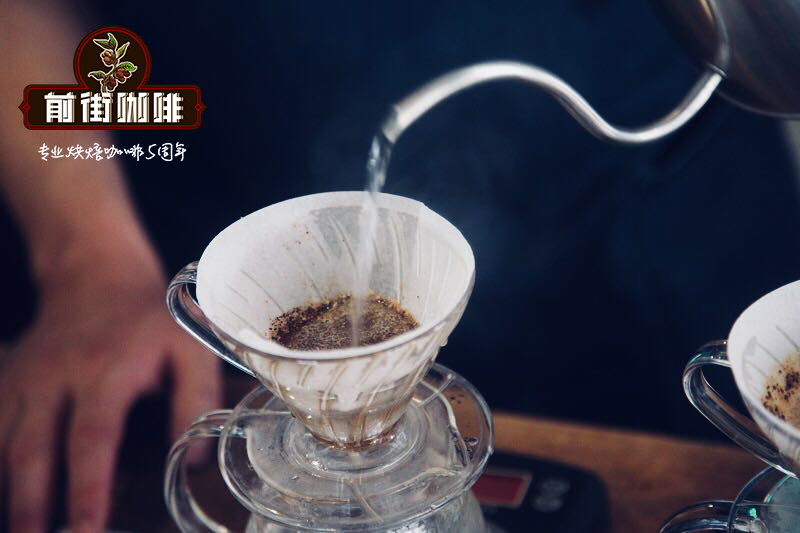Introduction of Cepro Yanesha COOP of Yanisha Cooperative in Chanchamayo producing area of Central Peru

Professional coffee knowledge exchange more coffee bean information please follow the coffee workshop (Wechat official account cafe_style)
Coffee is one of the most productive staple crops in Peru. In addition, Peru accounts for the largest share of the organic and fair trade coffee market and is one of the largest coffee exporters in the world. Peru has a variety of regions and climates and produces many different kinds of coffee.
The Chanchamayo producing area of central Peru is an Indian aboriginal people of the local Yanesha tribe. The mountain is extremely high above sea level, averaging between 1550 and 1850 meters above sea level. It is an ancient Indian reserve with a population of 20, 000 people who raise poultry and grow farming for a living. In order to increase family income, they set up the Yanisha Cooperative CENTRAL DE PRODUCTORES YANESHA (CEPRO YANESHA). Start growing coffee and, with the assistance of a Dutch Rabobank Foundation project, start exporting one container (18 tons) to the European market in 2011 and two more containers in 2012. By 2017, 13 containers and fewer high-priced special beans will be exported, greatly improving the income of local aboriginal families.
Cepro Yanesha COOP is located in remote mountain areas and sparsely populated. Its coffee is grown in an organic (Organic Coffee) way. With the assistance of the Rabobank Foundation Fund, experts guide organic cultivation and then sell it to importers through Rabobank links. Members of the cooperative coffee family grow less than 2 hectares on average, and the cooperative is surrounded by natural primeval forests, tall trees and fertile land. Moreover, the intermittent torrential rain in the afternoon brings abundant rainfall and moisture, and primitive animals and plants create natural shade trees and natural organic matter that increase soil fertility.
Today, under the Rabobank Foundation Fund Assistance Program, 70 coffee cooperatives have successfully grown coffee for marketing and export through this fund. Coffee has a soft citrus flavor, very low acidity, medium mellow, caramel sweetness and balanced taste. Charming aroma and soft taste, sweet and meticulous.
Peru is the place of the ancient Inca empire, covering an area about 35.7 times the size of Taiwan, stretching along the Antilles, the highest peak in South America. At that time, 180 people from Spain entered the world-famous Golden City in 1533 and returned to Spain with plundered and rich gold. Coffee was introduced and grown in the 18th century, and the Andes stretched across Peru, covering an area of about 3 gamma and 4. Peru, located in South America, covers an area of more than half of Central America and is the source of the Amazon. Peru has a population of about 28 million, of which more than 200000 small farmers grow coffee, with an average planting area of less than 2 hectares. Coffee is planted along the eastern side of the Andes, with a vast planting area, which can be divided into three major areas:
North District: Piura, Amazonns, San Mortin
Central: Huanuco, Junin, Pasco, Chanchamayo
Southern District: Cuzco, Ayacucbo, Apurinac, Puno, Urubamba
The main planting areas include the Chamayo Valley east of Lima, the Beibu Mountain area and the western slopes of the Andes. More than 10 areas with unique coffee flavor can be divided. The annual output is about 3 million bags of Arabica coffee, all of which are collected and washed and mainly exported to the United States and Germany. Up to 98% of Peruvian coffee is grown in forest areas, most of which are produced by small farmers. Most Peruvian coffee is grown under natural conditions, and local farmers have little money to buy chemical fertilizers and pesticides, which is why almost all the locally produced coffee is organic beans. It is currently the third largest exporter of coffee in South America and the ninth largest exporter of coffee in the world. Coffee varieties are Typica,Bourbon, Cattura, Pache.
Qianjie coffee: Guangzhou bakery, the store is small but a variety of beans, you can find a variety of unknown beans, but also provide online store services. Https://shop104210103.taobao.com
Important Notice :
前街咖啡 FrontStreet Coffee has moved to new addredd:
FrontStreet Coffee Address: 315,Donghua East Road,GuangZhou
Tel:020 38364473
- Prev

What is the Organic Certified Coffee of the Sun and Coffee Cooperative in Peru? Characteristics of Organic Coffee in Peru
Professional coffee knowledge exchange more coffee bean information follow coffee workshop (Wechat official account cafe_style) Peru began to export coffee in 1887 and is now the eighth largest producer and the world's largest exporter of organic coffee, with an annual volume of 2 million bags, accounting for 5 per cent of total exports. More than 1/3 of the country's coffee is grown in the Cajamarca region in the north and in the south.
- Next

What is the organic fair trade of Peruvian coffee? What's the flavor of organic coffee?
Professional Coffee knowledge Exchange more information about coffee beans Please follow the coffee workshop (official Wechat account cafe_style) most farmers in Peru own a small plot of land (about 2 hectares per person). Like this kind of organic coffee, Peruvian coffee is mostly processed and sold through cooperatives. Although there are a variety of coffee of different quality and flavor, generally speaking, Peruvian coffee has
Related
- Detailed explanation of Jadeite planting Land in Panamanian Jadeite Manor introduction to the grading system of Jadeite competitive bidding, Red bid, Green bid and Rose Summer
- Story of Coffee planting in Brenka region of Costa Rica Stonehenge Manor anaerobic heavy honey treatment of flavor mouth
- What's on the barrel of Blue Mountain Coffee beans?
- Can American coffee also pull flowers? How to use hot American style to pull out a good-looking pattern?
- Can you make a cold extract with coffee beans? What is the right proportion for cold-extracted coffee formula?
- Indonesian PWN Gold Mandrine Coffee Origin Features Flavor How to Chong? Mandolin coffee is American.
- A brief introduction to the flavor characteristics of Brazilian yellow bourbon coffee beans
- What is the effect of different water quality on the flavor of cold-extracted coffee? What kind of water is best for brewing coffee?
- Why do you think of Rose Summer whenever you mention Panamanian coffee?
- Introduction to the characteristics of authentic blue mountain coffee bean producing areas? What is the CIB Coffee Authority in Jamaica?

